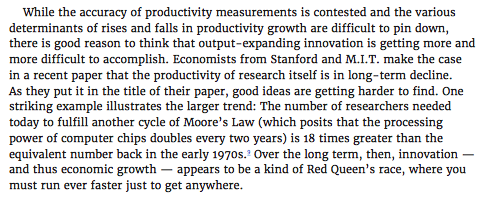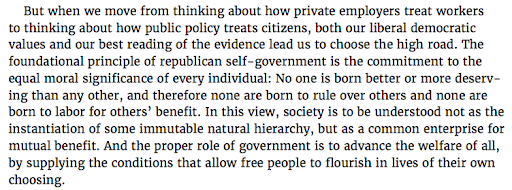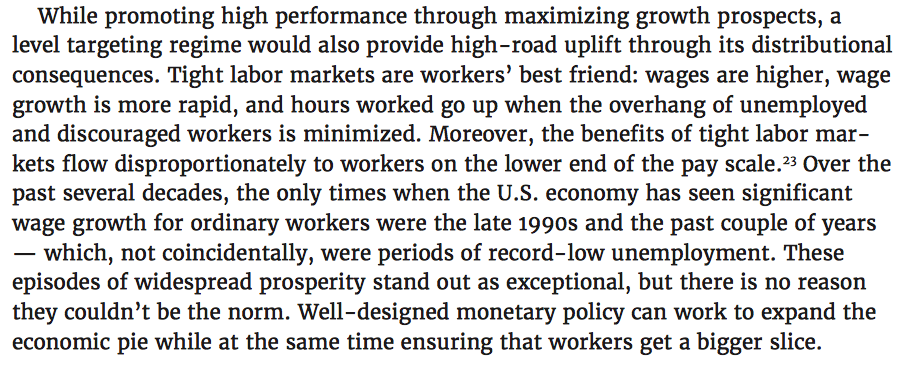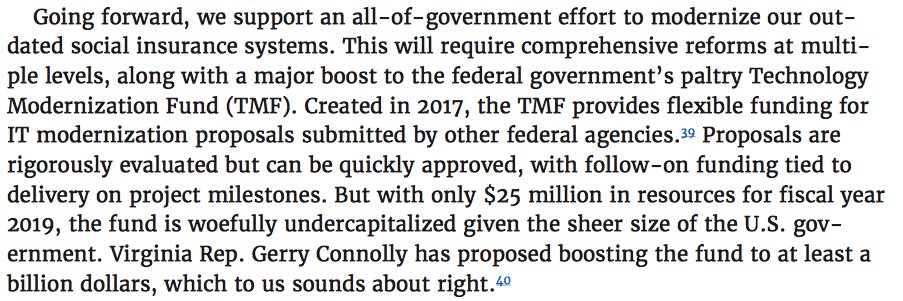MASSIVE NEW PAPER: Last year, we released our policy vision that rejected the false dichotomy of “pro-market” and “pro-government."
We& #39;ve transformed this into a concrete agenda, our blueprint for the "free-market welfare state" THREAD 1/ https://www.niskanencenter.org/faster_fairer/agenda.html">https://www.niskanencenter.org/faster_fa...
We& #39;ve transformed this into a concrete agenda, our blueprint for the "free-market welfare state" THREAD 1/ https://www.niskanencenter.org/faster_fairer/agenda.html">https://www.niskanencenter.org/faster_fa...
The focus of our efforts is not to provide a complete program to save America. In this agenda, we’re addressing the problem of restoring inclusive prosperity — revitalizing lagging economic dynamism while ensuring that the rewards of such dynamism are broadly shared. 2/
Even before #COVID19, America’s 21st-century malaise of dimming economic vitality and deepening social divisions demonstrated that something has gone wrong. Very wrong. Let’s do a little review. https://www.niskanencenter.org/what-the-pandemic-revealed/">https://www.niskanencenter.org/what-the-...
From 2000 through 2018, growth in real GDP per capita — the best overall measure of economic output — averaged just a bit over 1% a year, down sharply from the 2% annual growth rate that persisted over the whole course of the 20th century. 4/
In 1970, over 90% of 30 year-olds were making more money than their parents. As of 2010, only 50% of 30 year-olds could still say the same ( @therajchetty et al.) . 5/
There’s a huge divide in regional economic prosperity, w/ wealth concentrated in coastal cities, as @ModeledBehavior, @WillWilkinson and others have pointed out. 80% of U.S. counties have seen a decline in working-age population between 2007 and 2017. 6/ https://www.niskanencenter.org/the-density-divide-urbanization-polarization-and-populist-backlash/">https://www.niskanencenter.org/the-densi...
What went wrong to cause America’s descent into stagnation and inequality? It’s been a combination of social forces and bad public policy choices. 7/
In terms of social forces, labor force participation is down, educational attainment is down, and it’s just getting harder to generate good ideas. All of this affects productivity. 8/
As @hamandcheese and @Lindsey_brink note, “America’s liberal democratic capitalist welfare state has faltered in fulfilling its promise because times have changed. The task of delivering inclusive prosperity has grown much more difficult.” 9/
Then there are the policy failures of the past few decades, including the tax cuts, rollbacks on health and safety regulations...the regulatory capture, in which political insiders lobbied to benefit themselves at the expense of others...the misallocation of resources. 10/
What’s the solution? We firmly believe that the private sector functions at its best when it is organized around free markets... 11/
....in other words, markets that feature free entry, free exit, free trade across national boundaries, freedom to hire and re, freedom to take a job or quit, freedom to introduce new products or production methods without prior permission, and freedom to invest. 12/
BUT free markets don’t just pop up out of nowhere, nor are they self-sustaining (sorry libertarians). They require strong institutions - a strong public sector - to function effectively in the long term. It needs rules, social insurance, etc. to function at its best. 13/
Let’s borrow an idea from labor markets: “High-road” employers invest in their workforce, seeing each person as a long-term investment. “Low-road” employers minimize costs even if it means high turnover, but they provide opportunities that might otherwise not have existed. 14/
Both “high road” and “low-road approaches have their places in a diversified economy. But public policy must always take the high road. A capable govt. combined with a free market provides the conditions for people to choose their paths and flourish. 15/
We’re all too aware that noble intentions that expand government are not enough. 16/
No, big government by itself can lead to disaster and MORE inequality. We need a plan to avoid the pitfalls of regulatory capture and kludgeocracy (policy breakdown, bad execution, bureaucracy, etc). Steve Teles explains more in @NationalAffairs 17/ https://www.nationalaffairs.com/publications/detail/kludgeocracy-in-america">https://www.nationalaffairs.com/publicati...
That’s where our agenda comes in. We tackle the most substantive shifts in procedure, as well as policy, redefining the “what” as well as the “how” of govt. 18/
Our 3 major goals:
 https://abs.twimg.com/emoji/v2/... draggable="false" alt="✔️" title="Fettes Häkchen" aria-label="Emoji: Fettes Häkchen">Revive the labor market by reforming monetary policy+social insurance
https://abs.twimg.com/emoji/v2/... draggable="false" alt="✔️" title="Fettes Häkchen" aria-label="Emoji: Fettes Häkchen">Revive the labor market by reforming monetary policy+social insurance
 https://abs.twimg.com/emoji/v2/... draggable="false" alt="✔️" title="Fettes Häkchen" aria-label="Emoji: Fettes Häkchen">Get rid of insider privilege created by regulatory capture
https://abs.twimg.com/emoji/v2/... draggable="false" alt="✔️" title="Fettes Häkchen" aria-label="Emoji: Fettes Häkchen">Get rid of insider privilege created by regulatory capture
 https://abs.twimg.com/emoji/v2/... draggable="false" alt="✔️" title="Fettes Häkchen" aria-label="Emoji: Fettes Häkchen">Encourage economic dynamism through regulatory reform+public investment. 19/
https://abs.twimg.com/emoji/v2/... draggable="false" alt="✔️" title="Fettes Häkchen" aria-label="Emoji: Fettes Häkchen">Encourage economic dynamism through regulatory reform+public investment. 19/
Let’s take a quick look at our first goal (structural reform to the labor market) which definitely takes a high road approach to investing in people and being a buffer when they face risks….by upgrading the public sector. 20/
Many jobs and industries are likely to completely disappear due to the pandemic, as @jillianfward and @livrockeman report. Many job seekers will quit their job searches or have to undergo extensive retraining. 21/ https://www.bloomberg.com/news/articles/2020-06-14/millions-of-jobs-could-be-permanently-lost-in-reallocation-shock">https://www.bloomberg.com/news/arti...
We argue that U.S. monetary policy has too often erred on the side of restrictiveness, resulting in millions of lost jobs. We propose a shift to level targeting in order to encourage job growth and economic dynamism in the coming years. 22/
We also need more modernized, more strategic ways to provide social insurance to workers. While the CARES Act provided aggressive cash assistance, the fact that it was a tax credit meant that many of the individuals who needed it most did not get it. 23/
The execution of the CARES Act also demonstrated the need to comprehensively modernize the ways of delivering social insurance to avoid glitches and fraud. It’s basic public infrastructure, like roads, and it’s high time for some maintenance. 24/
As @pmarca said, “A government that collects money from all its citizens and businesses each year has never built a system to distribute money to us when it’s needed most.” 25/ https://a16z.com/2020/04/18/its-time-to-build/">https://a16z.com/2020/04/1...
Other ways to protect and invest in the workforce via social insurance include employment security and workforce development measures, policies that empower working families (like the Child Allowance), and Universal Catastrophic Coverage. We explore these in detail. 26/
Now that we’ve looked at boosting the public sector, our next goal explores freeing up the PRIVATE sector by fighting ill-gotten gains at the top. We seek to restore U.S. capitalism to what it should be: dynamism that is both socioeconomically and geographically inclusive. 27/
We point out how the financial sector has been fueled by massive subsidies and how the unnatural ballooning of the financial sector has done a disservice to our economy and to taxpayers. 28/
We propose specific reforms in order to roll back the excesses of the intellectual property system...so that creators can still be rewarded for their ideas but also so that new innovators are not barred from the playing field.
29/
29/
. @DanielTakash and @lindsey_brink have extensively documented the issues with and proposed solutions to IP policy. (more on this @capturedeconomy) 30/ https://www.niskanencenter.org/new-paper-why-intellectual-property-is-a-misnomer/">https://www.niskanencenter.org/new-paper...
We look at a number of issues that have driven prices so high in the medical field, from lobbying that pads physicians’ pockets to patenting issues that keep drug prices high, and outline specific supply-side reforms.
31/
31/
And we examine the high cost of housing and conclude that the best way to advance the public interest across the board would be to reform #zoning so that new housing could be built in growing localities. #YIMBY 32/
The final section of our agenda outlines our plan for growing the economy, even as new ideas become harder to find. Rather than seeking to revitalize solutions that worked yesterday, we look forward into the new challenges and opportunities of the 21st century. 33/
Our solutions deal with specific, pro-growth proposals to decarbonize the economy, fueling growth via immigration, doubling down on research and development, reducing barriers to geographic and labor mobility, and more. 34/
There’s only so much detail you can get into on Twitter, so if you want more, you’re going to have to just read the paper itself. If you want to review last year’s policy vision, here it is. https://www.niskanencenter.org/the-center-can-hold-public-policy-for-an-age-of-extremes/">https://www.niskanencenter.org/the-cente...
The rest is all here (all 100-something pages of it). Grab a big cup of coffee, read it, think about it, and give us your feedback! 36/36 https://www.niskanencenter.org/faster_fairer/agenda.html">https://www.niskanencenter.org/faster_fa...

 Read on Twitter
Read on Twitter









